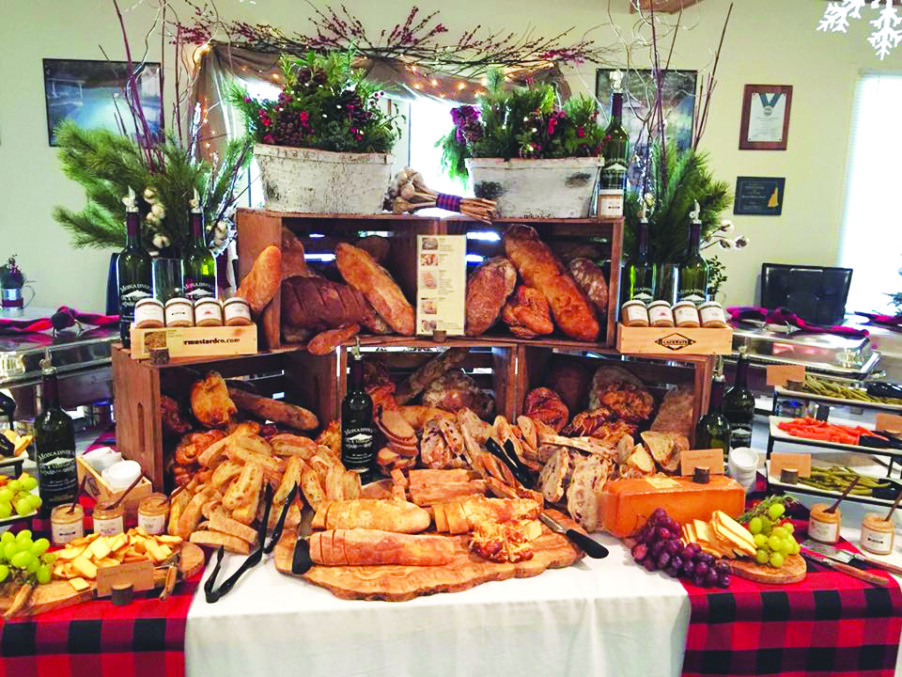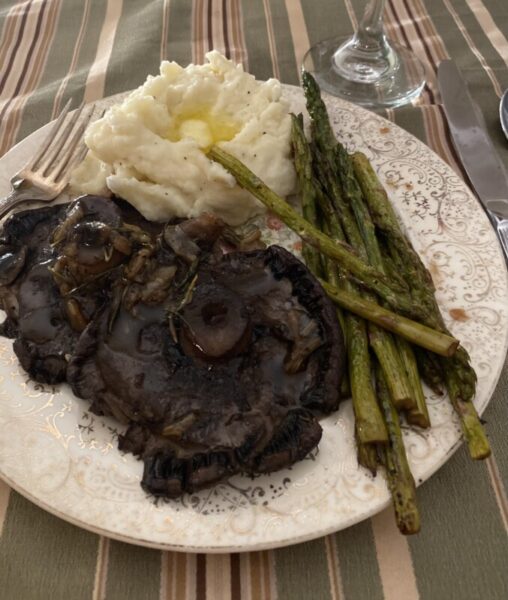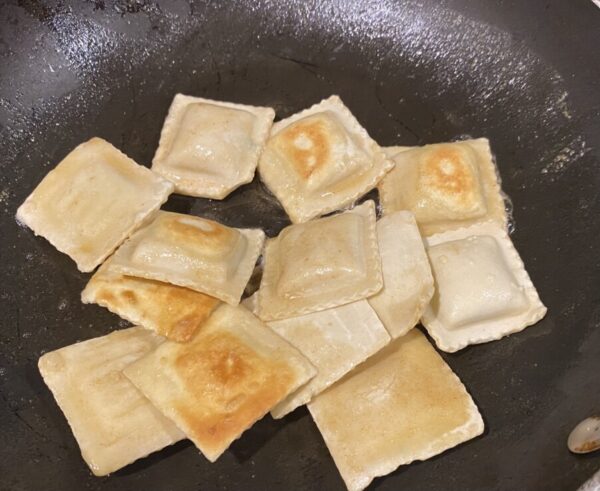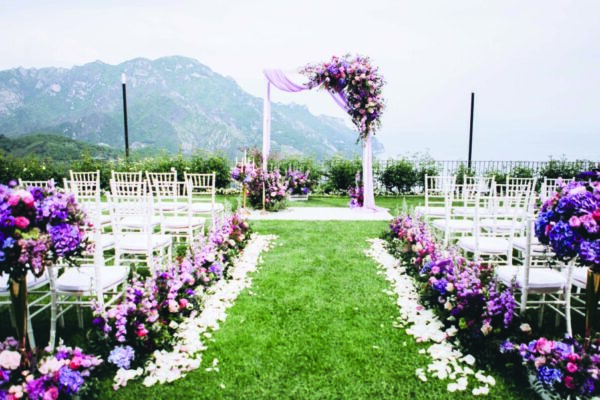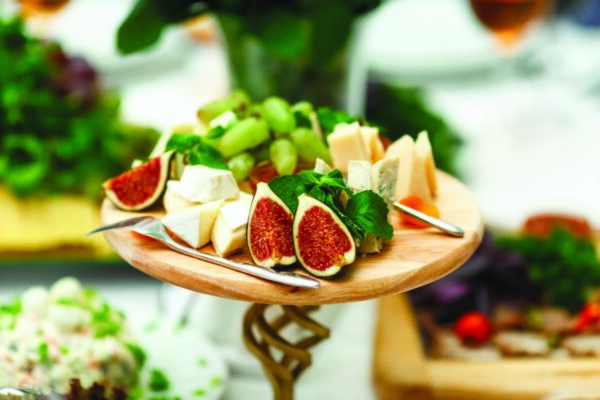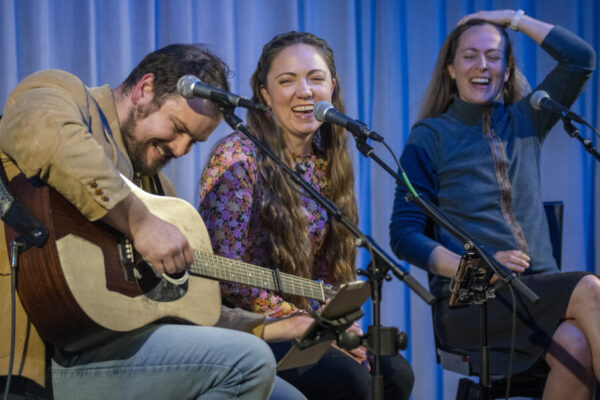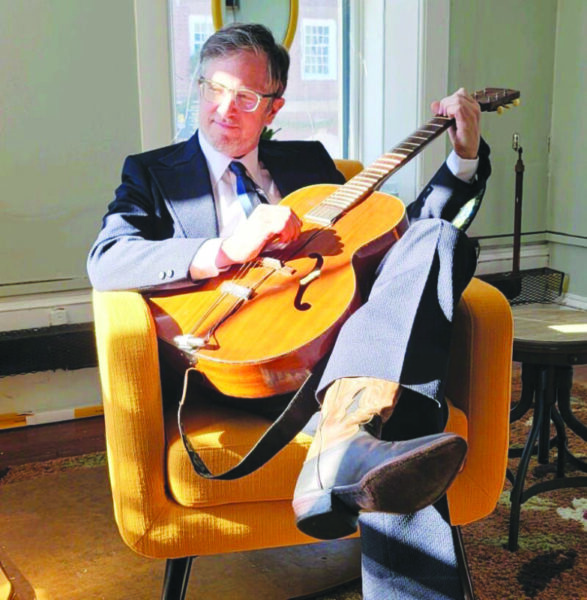Winter farmers markets offer a taste of sunnier seasons
Farmers markets aren’t just for the warmer months; some continue to operate through the winter, featuring a variety of vendors selling everything from fresh produce to artisanal crafts.
Via email, organizers and vendors discussed how these markets adapt to the colder season and what unique offerings they bring to the community.
Concord Farmers Market
Brenda White, with input from her fellow organizers for the Downtown Concord Winter Farmers Market, discussed how this season is going.
How has this year’s winter farmers market differed from previous years in terms of vendor participation and customer attendance?
This year, our fledgling market has grown in visibility through our social media advertising and new signs that are more visually appealing and draw the attention of passersby. We worked with a local Concord artist, RS Creative, who designed our fresh, new logo. Attendance is up from an average of 275 customers to roughly 425 customers. We have gained some wonderful vendors to add to a diverse offering. The produce and products that you can find range from fish, meats and eggs to fresh microgreens, root veggies, fresh baked treats and bread. We have vendors who make wonderful soaps, lotions, candles and dog treats. We even have a vendor with fresh cut winter flowers … and microbrews and wine. There is such a wide variety of local goodness.
What unique challenges does operating a farmers market in the winter present, and how have you and the vendors adapted to these conditions?
Finding a location that works for all patrons and gives us enough space to set up. We are grateful for the generosity that Stephen Duprey has gifted this market in its early years by giving us a location to have a market to provide easy access for customers to obtain amazing local products. 7 Eagle Square is a bright, beautiful open space with two levels of shopping. It is a great location for folks who are either choosing to walk around downtown or park close by for quick easy in and out.
Can you share some success stories or particularly popular initiatives from this year’s winter market?
Manus Basket: Every Saturday we have a basket set up to gather donations to support families in need of food. So we have partnered with The Boys & Girls Club of Central and Northern New Hampshire. How it works is that each market Downtown Concord Winter Farmers Market purchases food from vendors at the market to place in the cooler or basket for the Boys & Girls Club. We have budgeted a certain amount a week to spend. In addition to that, customers and vendors purchase or donate items to add to the basket and cooler as well while they shop. This supports the vendors as well as helping our local community.
We were excited to host a sing-along with Santa in December this year. It was well-received and fun for the customers’ children and families. … As always, the Merrimack County Conservation District has continued to offer its Granite State Market Match and Veteran Value Bucks programs. Through the Granite State Market Match, SNAP/EBT recipients can double the amount they are spending on food items offered at the market. For example, if $20 is charged to a SNAP card, the recipient will receive $40 in vouchers to spend on food items. The Veteran Value Bucks program provides $20 to veterans and active service members once a month to shop for any items at the market. These programs allow more customers to visit our market, while also keeping more dollars local. It’s a win for everyone.
How important are winter farmers markets for the vendors’ businesses, and what role do they play in the local community during the colder months?
There are very few markets in the winter months, and it is not easy for vendors to get their products out to consumers on their own during the winter months without this farmers market community. The market provides a central location with easy access for the public to get all their needs in one location. We have a variety of meats including traditional beef, pork, lamb, chicken, fish and now a new vendor who provides ostrich. We have cheeses, yogurt, beer, soaps, bread, pastries, gluten-free pastries and bread, vegetables, syrup, honey, jams, eggs, beef chips, mushrooms, coffee, microgreens, dog food, popcorn, nuts, soft pretzels, rolls and flowers. These amazing vendors are local and love to support and help their communities and provide fresh locally grown/made products.
What measures have you implemented to encourage community engagement and ensure a safe, enjoyable experience for visitors during the winter season?
We are fortunate that we can use the Storr Street parking garage’s top level to park and use the ramp to bring products down to 7 Eagle Square easily for setup. Customers can use the garage’s top level as well during business hours of the market. The building has an elevator so that patrons can access both floors of the market easily if they prefer not to use the stairs. Walkways and the courtyard are maintained well to be sure that the area is free of ice and snow so customers have easy and safe access to the building. We also have local musicians who are scheduled by NH Music Collective to entertain at the market to add another family-friendly feel to the experience.
Looking forward, are there any new plans or ideas you’re excited to introduce to the winter farmers market in future seasons?
We hope to have a new permanent location in the future that will give us more space and make it even more convenient for customers to join us.
Joyberry Farms
Amy Joyce and Brad Ikenberry of Joyberry Farms, based in Mason, joyberryfarms.com. Find them at the winter Salem NH Farmers Market.

Can you tell us about yourself and what you offer at the winter farmers market?
We are the owners of Joyberry Farms, a small family-owned and -operated farm in Mason. We cultivate fresh mushrooms and create unique mushroom products. At the markets you can find a variety of fresh mushrooms each week, as well as a variety of dried products like mushroom coffee, teas, dried mushroom soups and risotto. We also make wellness mushroom powders.
How has this year’s market been for your business in terms of customer attendance and sales trends?
The sales in the winter tend to drop a little bit, due to attendance and weather. However, each year, as we grow, we also see a rise in our sales trends from repeat and new customers that love our products.
What unique challenges and opportunities does the winter market present for you?
The cold weather definitely makes farming a lot harder, but it also gives us time to slow down and be more creative.
How do you adapt your offerings or business strategy for the winter season?
Mushrooms, like vegetables, grow differently in each season. We offer different ‘cold weather’ mushrooms in the winter than in the summer, but some varieties grow all year-round.
What are the main benefits of participating in the winter market for your business?
Although our summer season is packed with farmers markets, we do attend a few winter markets which helps keep our business running year-round.
What is a popular item or service that draws customers to your stall at the winter market?
Our fresh mushrooms remain our top seller; however, in the winter we get an influx of sales from our soups, risotto, coffee and teas.
Blakeney’s Bakery
Brenda White, Blakeney’s Bakery, based in Contoocook, blakeneysbakery.com. Find them at the Downtown Concord Winter Farmers Market.
Can you tell us about yourself and what you offer at the winter farmers market?
Blakeney’s Bakery has a large variety of breads, scones, cookies, soft pretzels, whoopie pies, lemon bars and cookies.
How has this year’s market been for your business in terms of customer attendance and sales trends?
Each year has grown in customers and sales.
What unique challenges and opportunities does the winter market present for you?
Weather can be a challenge, especially if it keeps customers from coming out.
How do you adapt your offerings or business strategy for the winter season?
Really don’t have to do much. We make seasonal products and create new flavors of bread sometimes just from customer suggestions. We don’t make as many products during the winter market as the customer base is significantly smaller due to summer guests and residents who leave for the winter.
What are the main benefits of participating in the winter market for your business?
Being able to provide a great product for our customers and to … work with other vendors to support them by pairing their products with ours when possible.
What is a popular item or service that draws customers to your stall at the winter market?
Our variety of bread flavors and scones. We strive to have savory, sweet and salty options to meet a variety of needs that our customers have.
HorseFeathers Ostrich Farm
Monte and Alison Cossette. HorseFeathers Ostrich Farm, based in Webster, horsefeathersostrichfarm.com. Find them every other Saturday (next date March 2) at the Downtown Concord Winter Farmers Market.
Can you tell us about yourself and what you offer at the winter farmers market?
My husband and I started our ostrich farm several years ago. We’ve been growing our farm, breeding stock, and now are excited to be able to offer USDA ostrich meat for the first time both locally and through online sales. This is our first season participating in farmers market and we have been thrilled with this market.
What unique challenges and opportunities does the winter market present for you?
Since we are offering a product that not as many people are familiar with, the amount of customers going through the market is very important for us. The more people we can show and teach about ostrich meat, the more sales and repeat customers we can have.
How do you adapt your offerings or business strategy for the winter season?
Currently we are bringing a small amount of meat and only a few types of meat cuts; we are hoping to be part of the summer market and have more offerings.
What are the main benefits of participating in the winter market for your business?
As a new business it is amazing to have people to talk to about our product. All organizers of the group have been amazingly helpful as we get started with our farmers markets and our business.
What is a popular item or service that draws customers to your stall at the winter market?
In our booth we have a display of ostrich egg shells with a fake ostrich head. That seems to really pique interest for people and get them over to the booth. The egg shells can be used for decorations and arts, but the display is a great starting point to bring people to the table and start talking about the meat.
Arándano Farm and Gluten Free or Die Bakery
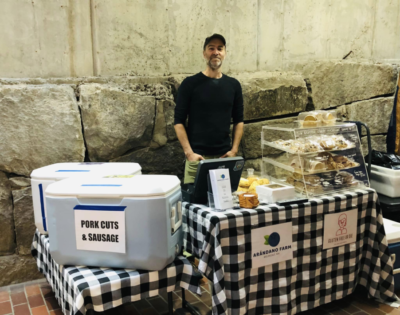
Paul Gareau and Angela Letelier, Arándano Farm and Gluten Free or Die Bakery, Belmont, arandano.farm, gfordie.com. Find them at the Downtown Concord Winter Farmers Market.
Can you tell us about yourself and what you offer at the winter farmers market?
It’s our first year as vendors in Concord; generally we attend other markets in Belknap County and we’ll be running three new markets in 2024. Our farm offers organic-fed chicken, grass-fed pork, eggs, vegetables and microgreens. The bakery offers celiac-safe gluten-free baked goods.
What unique challenges and opportunities does the winter market present for you?
Our area mostly offers summer markets, so the winter market helps us sell our products throughout the winter.
How do you adapt your offerings or business strategy for the winter season?
Less emphasis on grilling, more on meal prep.
What are the main benefits of participating in the winter market for your business?
Income throughout winter months and expanded customer base.
What is a popular item or service that draws customers to your stall at the winter market?
Our main attraction is no-compromised gluten-free baked goods, and we have a following for our chicken and pork as well.
Pastry Dream
Ann and Roger Baril of Pastry Dream are based in Derry. Find them at the Downtown Concord Winter Farmers Market and the winter Salem NH Farmers Market.
Can you tell us about yourself and what you offer at the winter farmers market?
We sell individually sized pastries called Dreams. Some call them small pies. Our flavor selection ranges from lemon curd and raspberry to chocolate/peanut butter to our brand new Key lime. We presently offer nine flavors — something for everyone.
How has this year’s market been for your business in terms of customer attendance and sales trends?
We have already seen an increase over last year.
What unique challenges and opportunities does the winter market present for you?
A challenge we experience each year is New Year’s resolutions and the fact that everyone eats too much over the holiday season and cuts back for a time especially in January. Our opportunity is that farmers markets allow us the opportunity to present our products to those who may not have tasted them before.
How do you adapt your offerings or business strategy for the winter season?
For the winter season we offer a pecan pie Dream and a ginger/spice cake with cinnamon cream cheese frosting along with all of our other items.
What are the main benefits of participating in the winter market for your business?
Feedback from customers is a huge benefit of being at the farmers markets. We have a lemon curd and a raspberry and many customers suggested that we put the two flavors together. We did, and the lemon/raspberry is one of our best sellers. We’ve also been asked to create a Key lime dream, which we are now offering and is a great success.
What is a popular item or service that draws customers to your stall at the winter market?
We offer samples, which give new customers the opportunity to taste our flavors before buying. This makes a big difference, because once you taste the filling flavors you have to have more.
KYS Food for Dogs
Sonia Javier Obinger of KYS Food for Dogs, based in Sandown. Find them at the Downtown Concord Farmers Market and the winter Salem NH Farmers Market.
Can you tell us about yourself and what you offer at the winter farmers market?
I started preparing whole-food recipes because of my interest in providing the best nutrition for my three pugs and a Boston terrier. I began researching, taking classes and using my experience to develop whole-food recipes for them. There would even be times when my friends would come over and ask what was cooking because it smelled so good. I said it was my dog’s dinner. So fast forward 16-plus years of testing, making mistakes, re-testing and friends’ support, I started KYS Whole Food for Dogs. Our recipes are created in small batches, bone broth braised with organic ingredients sourced from local farms sold fresh/frozen in compostable packages at farmers markets, online and retail. Recipes offer seasonally harvested organic vegetables with pasture-raised chicken or grass-fed beef, organ meat, seaweed, hempseed or flaxseed, providing dogs with a nutritious, complete meal. KYS ingredients are sourced from local farms like Vernon Family in Newfields. They provide the chicken for Tilly’s Pastured Chicken recipe. The organic vegetables in this recipe are grown and harvested by Heron Pond in Hampton, Two Farmers Farm in Scarborough, Maine, and Brandmoore Farm in Rollinsford.
How has this year’s market been for your business in terms of customer attendance and sales trends?
This is my first season with Downtown Concord Farmers Market, so I am still working on brand awareness. With the Salem NH Farmers Market this is my third winter market and this market has grown, especially at its new location at LaBelle Winery.
What unique challenges and opportunities does the winter market present for you?
I think the opportunities are that they are indoors, thus providing customers access to a great variety of vendors. I think the biggest challenge is New England weather, which this year has been relatively calm.
How do you adapt your offerings or business strategy for the winter season?
Since my recipes are based on harvest availability, root vegetables — carrots, winter squash, cranberries, for example — are used in the winter. Once the spring/summer season starts we have more greens, summer squash, blueberries, etc. So all year my customers have a diverse nutritional diet.
What are the main benefits of participating in the winter market for your business?
The benefits are that we still have access to our summer customers as well as meeting new ones. Plus it is warmer than being outside.
What is a popular item or service that draws customers to your stall at the winter market?
I think both Jake’s Grass fed Beef and Tilly’s Pastured Chicken recipes are equally popular. I have recently been testing with some of my customers’ liver truffles, which are another whole food product for those who want to provide a healthy treat for the dog.

